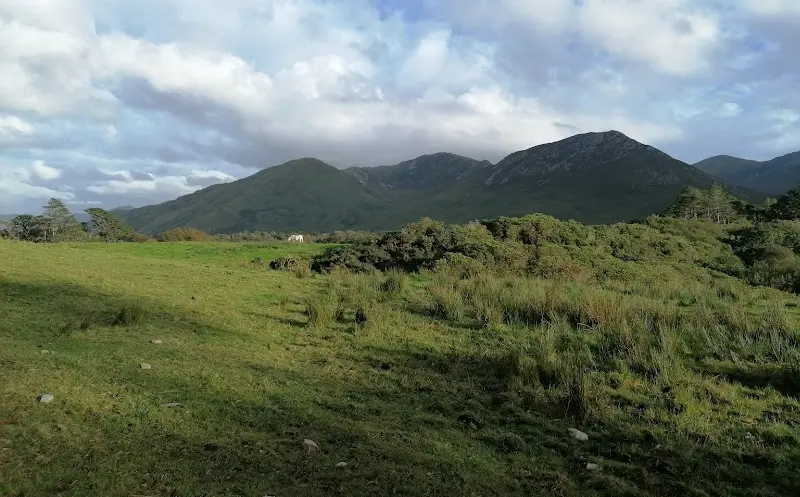Where were your ancestors from? What county did they live in? What barony? Which civil parish, which Poor Law Union? And, most importantly, what townland?
For a small country, we have found a bewildering variety of ways to carve up the land for administrative purposes. Some, like baronies and Poor Law Unions, are obsolete but still important from a genealogical perspective. Others, like electoral divisions and townlands, are as important now as when they were created.
Here’s a breakdown of the land divisions you will come across in Irish genealogical records, and why you need to know them.
Townlands
The townland is the smallest division of land for administrative purposes and the most important when tracing your Irish ancestors. Regardless of how historical records are organised geographically, they all ultimately come down to townlands.
Basically, a townland is an address — think of it as the equivalent of a street name for rural areas.
Townlands are ancient — they pre-date the arrival of the Normans in 1169. However, the earliest available recording of the country’s townlands is the Down Survey of Ireland, undertaken in the 1650s to aid with the redistribution of land confiscated from the Irish following the Cromwellian conquest.
Outside of our towns and cities (and in urban areas in a lot of instances), Irish people still use their townland as their address.
You will need to know the townland your ancestors lived in to identify them in most genealogical records. Being able to tie a family to a specific townland can also help to distinguish them from other families in the area with the same name(s).
It can also help to trace a family down through the generations — it is not unusual to find a family in the 1911 Census, trace their civil BMD records through the previous five decades, and find an earlier ancestor in Griffith’s Valuation, and even the Tithe Applotment Books, all in the same townland — and likely the same house.
However, bear in mind that people sometimes moved from one townland to another. Ideally, if this happened to your ancestors, you will be able to cross-reference other details to build a complete timeline of their lives.
There are more than 60,000 townlands in Ireland, and it is not unusual to find two or more townlands with the same name, even in the same county. So you will need to carefully identify the townland(s) relevant to your search.
Townlands.ie lists and maps every townland in the country, and also provides links to records for each townland in the 1901 and 1911 Censuses, and Griffith’s Valuation. Townlands.ie also provides maps and information on baronies, civil parishes, and electoral divisions.
Logainm.ie, the Placenames Database of Ireland, is another useful resource if you are having trouble identifying a place by its name.
Parishes
There are two types of parish — civil and ecclesiastical. This can be confusing as they serve two different purposes.
Ecclesiastical parishes
An ecclesiastical parish — usually just called a parish — is the area covered by a parish church. Knowing which parish your ancestors lived in, and therefore which church they attended, will enable you to find them in the corresponding parish register.
Which parish your family belonged to will depend on both geography and religion — Catholic and Church of Ireland parishes do not have the same boundaries, though they obviously overlap.
Civil parishes
Civil parishes are generally the same as Church of Ireland parishes, though the boundaries of church parishes have changed over the years to best serve the people in them.
Civil parishes were established in the Middles Ages, and have not changed. The civil parishes were adopted in the 1830s as a means of organising land for taxation. The Tithe Applotment Books, Griffith’s Valuation, and other land records are organised by civil parish, and by the townlands they contain.
The 19th century censuses were also organised by civil parish, and you will need to browse by civil parish to search for ancestors in the remaining fragments of the 1821-1851 censuses.
Baronies
Though they are all but obsolete today, the barony was once the most important land division for administration. Many baronies date back to the túatha or tribal divisions of ancient Ireland. These divisions were largely adopted by the Normans in the 12th century, and some boundaries were redrawn over the centuries by the British.
Baronies are less useful in genealogy than other land divisions, but knowing which barony your ancestors lived in is still helpful. Early 19th century land records such as Griffith’s Valuation and the valuation books can be searched by barony (as well as county, parish, and townland). The 19th century censuses were also organised by barony, as well as by civil parish.
Knowing which baronies your ancestors came from can sometimes provide surprising insights into their lives. For example, most of my Wexford ancestors were from the baronies of Forth and Bargy, an area of south Wexford heavily settled by the Normans from the 12th century onward. The people of Forth and Bargy spoke their own unique language, a dialect of Middle English known as Yola, up to the early 19th century.
Poor Law Unions
The early decades of the 19th century saw a significant increase in both the population of Ireland and the level of poverty among the Irish people. In 1838 the Irish Poor Law Act saw the country divided into 130 Poor Law Unions, each centred on a workhouse which was situated in a market town.
As the unions were centred on towns, their boundaries often crossed county boundaries. Each Poor Law Union was administered by a board of guardians, some elected and some appointed from the local judiciary.
As the century progressed, particularly during the Famine years, much of the population relied on the Poor Law system for relief from poverty and destitution. During the Famine, the number of Poor Law Unions in the country grew to 163.
In 1851, the Poor Law Unions were further subdivided into dispensary districts, with a total of 723 dispensaries throughout the country. These dispensaries provided medical care to the poor.
The Poor Law Unions were abolished in 1925 but, as outlined below, their geographical boundaries still play a role in genealogical research.
District Electoral Divisions
District Electoral Divisions (DEDs) were established under the 1838 Poor Law Act, for the purpose of electing guardians to the Poor Law Unions. Each Poor Law electoral division elected at least one guardian to the board.
The 1901 and 1911 censuses are organised by DED. If you cannot find your ancestors using the search facility on the census website, it is worth trying to locate them by browsing the records by DED and townland.
DEDs are now known as electoral divisions, and elections and censuses are still organised by electoral division.
Registrar’s districts
When civil registration of births, deaths and marriages was introduced in Ireland in 1864, the responsibility for overseeing registration fell to the medical officer in each of the dispensary districts set up under the Poor Laws.
Basically, if someone was born, or died, the local doctor had to be informed. A priest or other clergyman could act as a proxy for marriage registration during the wedding ceremony, but all marriage records were then passed on to the doctor for inclusion in his register.
In terms of geography, every Poor Law Union in the country became a superintendent registrar’s district, and every dispensary district became a registrar’s district.
Under this system, the register books from each registrar’s district were sent to a superintendent registrar as they were filled. The superintendent registrar oversaw each of the registration districts within the superintendent registrar’s district, and forwarded completed registers to the General Registrar’s Office in Dublin.
The districts continued to serve their functions under the Poor Laws until they were abolished in 1925. The same districts are still used for the registration of births, deaths and marriages.
When you search for a historic birth, death or marriage record on Irishgenealogy.ie, the records are organised by civil registration district.
The top of each page in the Irishgenealogy.ie database also lists the superintendent registrar’s district and the registrar’s district. These districts are based on the old system of Poor Law Unions and dispensary districts established in the 19th century.

Una Sinnott
I love exploring how our ancestors lived, and what we can find out about them from the records they left behind. Get in touch if you need help researching your Irish roots.

